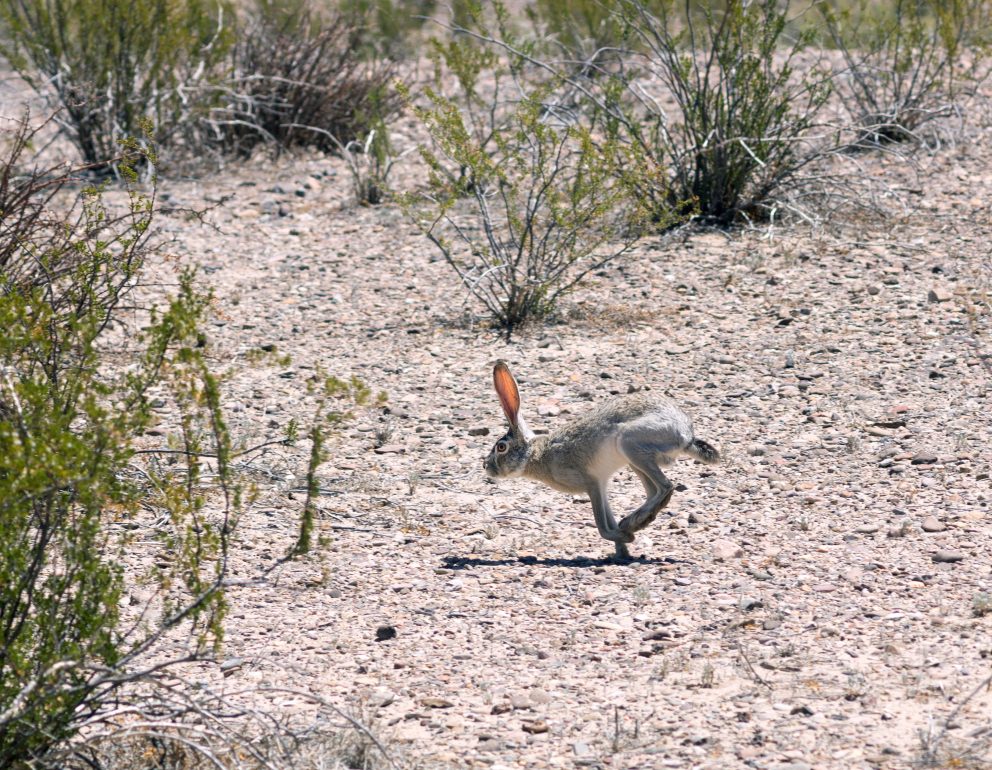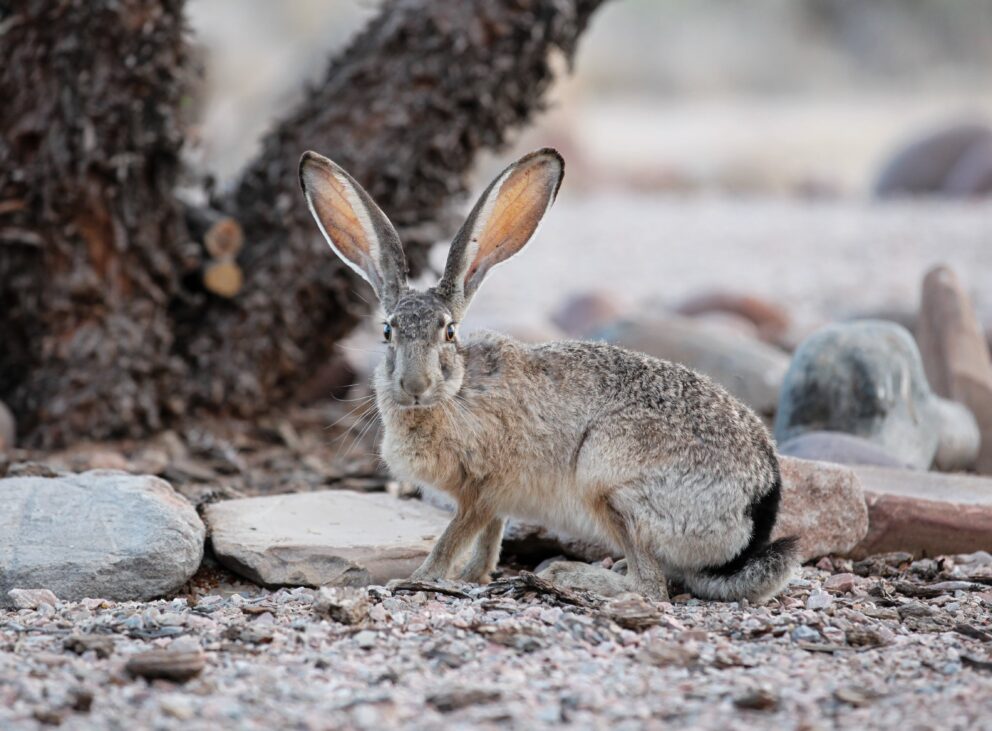- SCIENTIFIC NAME
- Lepus californicus
- CLASSIFICATION
- Mammal
- LIFE SPAN
- 1-5 Years
- SIZE
- 16-28” | 9-13lbs
- STATE CONSERVATION STATUS
-
- Unprotected
- FEDERAL CONSERVATION STATUS
- Least Concern
- GAME STATUS
- Game
- GAME TYPE
- Furbearer
- Washoe
- Humboldt
- Pershing
- Churchill
- Mineral
- Lyon
- Douglas
- Carson City
- Storey
- Elko
- Lander
- Eureka
- White Pine
- Esmeralda
- Nye
- Lincoln
- Clark
Habitat & Range
Black-tailed Jackrabbits live in desert scrubland, farmlands, dunes, and open prairies; especially favoring arid regions and agricultural areas with short grasses and crops.
- Cold desert shrubland and sagebrush
- Grasslands
- Mojave desert
Threats
- Habitat Destruction
- Overpopulation (only affects young Black-tailed Jackrabbits)
- Predation
- Tularemia (bacteria disease)
Natural History
Black-tailed Jackrabbits are herbivores, eating plants such as sagebrush, young trees, and even cacti. These mammals rely on speed, camouflage, and ‘freezing’ when they are spotted when avoiding predators (mainly coyotes and foxes). If they do feel threatened, they may zig-zag as fast as 30-35 miles per hour and leap 20 feet at a bound! If they are lucky enough to escape, they will flash the white underside of their tail to alert other jackrabbits in the area or thump the ground with their big hind feet to signal danger. They are mostly nocturnal, spending their time foraging from sunset to sunrise and resting in shallow depressions they dig under bushes during the day. Black-tailed jackrabbits can mate year-round with their peak breeding season between December through September. Females can have multiple litters every year and eight young (also called “leverets”) per litter. Sometimes the mother will place the young in separate hiding places to decrease the chances that a predator will find them all. She stays away from them during the daytime and returns several times a night to nurse the young to avoid attracting the attention of a predator.
Fun Facts














